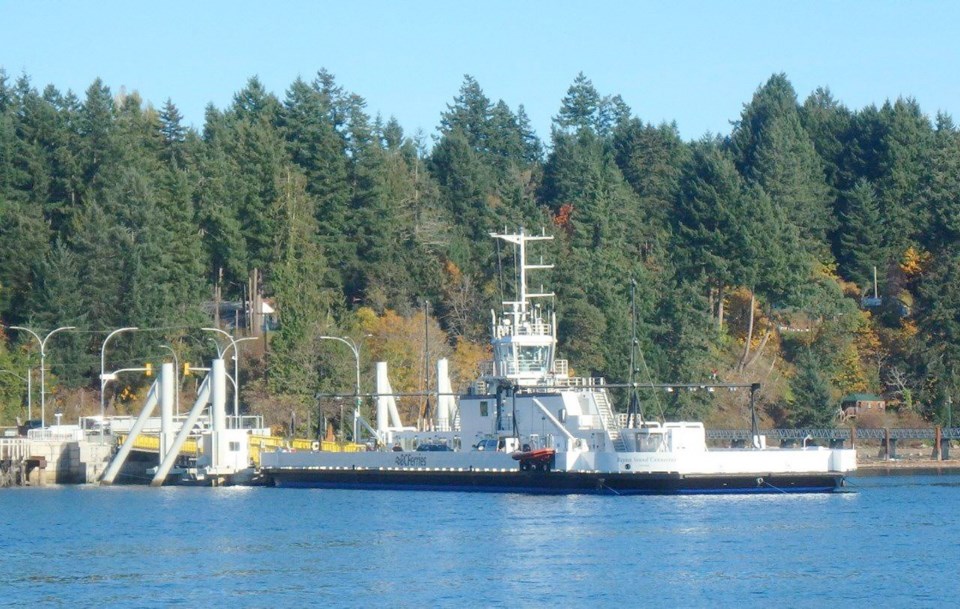The $15-million Baynes Sound Connector has officially joined B.C. Ferries’ fleet and is expected to be in service in early February, later than earlier announced.
B.C. Ferries announced Friday that it has taken ownership of the cable ferry, which will run between Buckley Bay on Vancouver Island and Denman Island.
“We are very pleased with the new cable ferry’s performance,” Mike Corrigan, Ferries president and CEO, said in a statement.
Cost savings of $80 million over the ferry’s 40-year life are predicted by Ferries compared with the existing service by the Quinitsa, which will continuing on the route until the Connector comes into service.
The cable ferry arrived off Vancouver Island’s east cost in late August for trials.
Built by Seaspan at its Vancouver Shipyards, the 258-foot-long ferry has room for 150 passengers and 50 vehicles.
It will cross a distance of nearly two kilometres, connected to three underwater cables. The cables operate under 15 to 20 tonnes of tension, Ferries said in a statement.
A cable ferry on the route has prompted concern from area residents. Critics say a cable ferry is unable to tack into the wind and meet waves head-on. They fear that winds speeds have been underestimated.
The Connector’s performance has done well to date, Ferries said.
“During rigorous acceptance trials and testing conducted by Seaspan in conjunction with B.C. Ferries, the new cable ferry met or exceeded all contract specifications, including speed and fuel consumption compared to the Quinitsa, the vessel currently in service on this rout,” Ferries said.
In those trials, the ferry reached a speed of 8.7 knots, which topped the 8.5 speed it was designed for.
“All speeds have been achieved on the designed one-engine operations, and the second engine is there for complete redundancy,” said Mark Wilson, Ferries’ vice-president of engineering.
Horsepower for one of the Connector’s engines is 490. The Quinitsa has four engines with 475 horsepower each, Wilson said.
The cable ferry uses “significantly” less fuel than the Quinitsa., he said.
Last November, Ferries said the cable ferry was expected to be operating in summer 2015.
That date has now been moved to 2016.
Ferries will now spend two months training crew.
Transport Canada must certify the vessel. Emergency procedures will be practiced. Adjustments to floating pontoons will be made at the terminals.
Meanwhile, three new ferries are under construction in Poland, with delivery scheduled to 2016 and 2017. Their total cost is $165 million.



